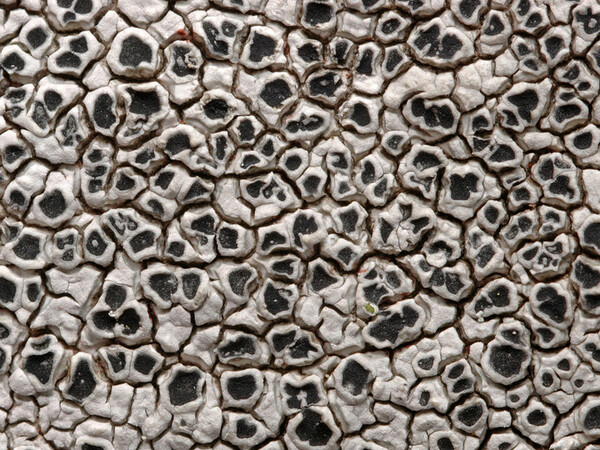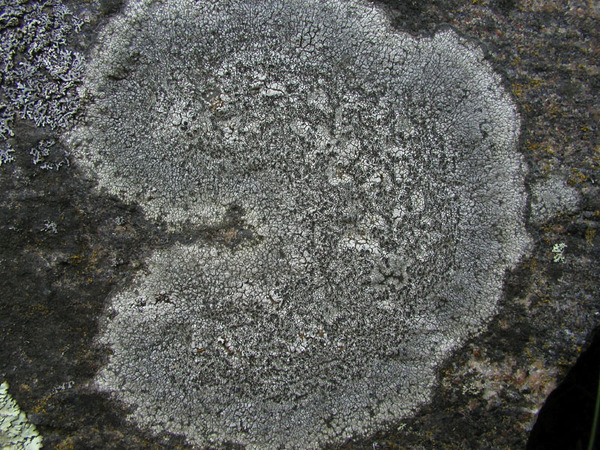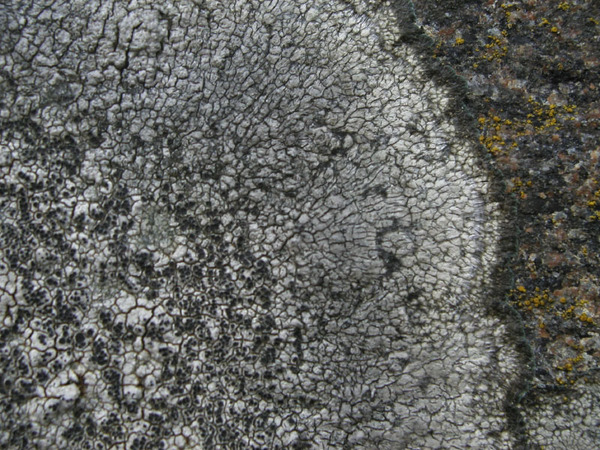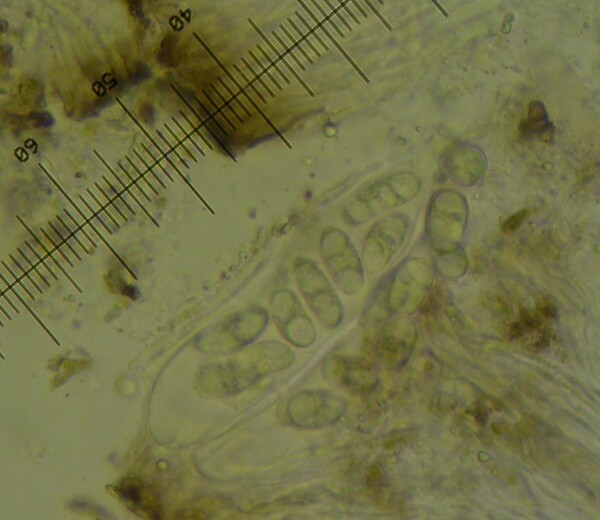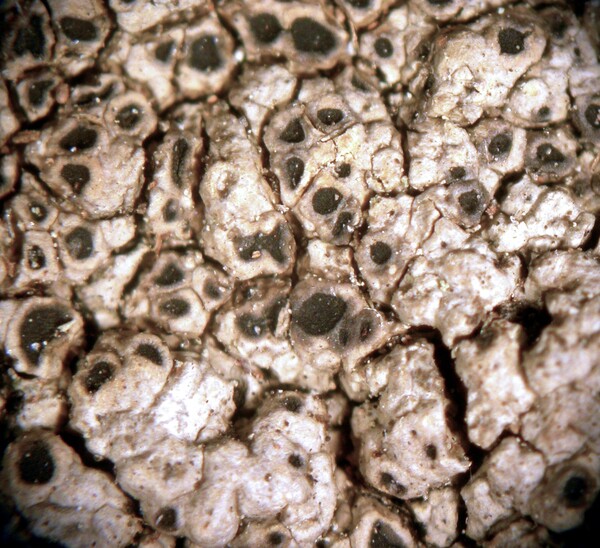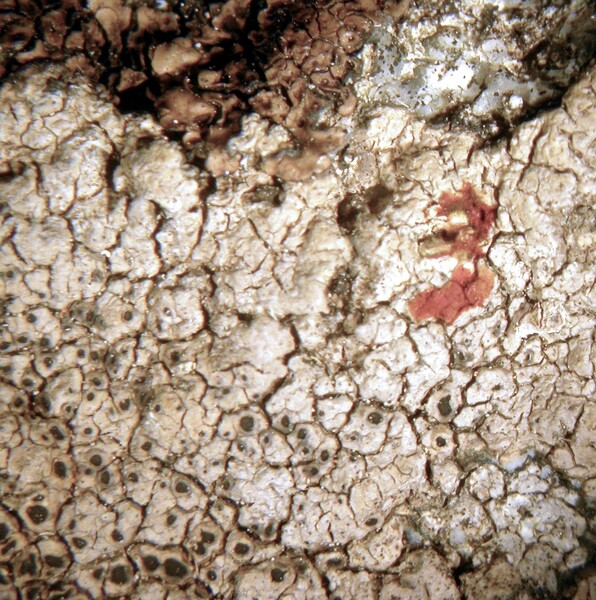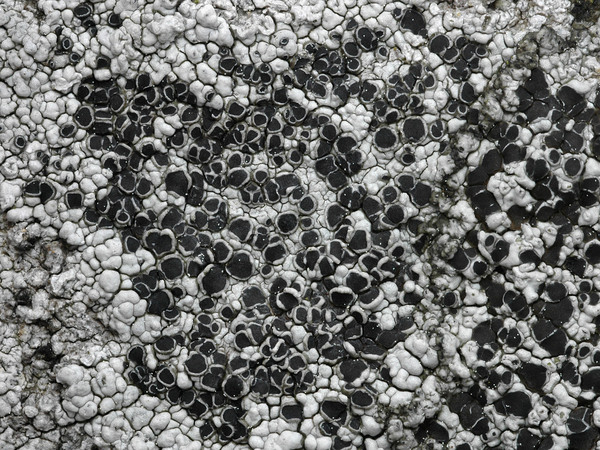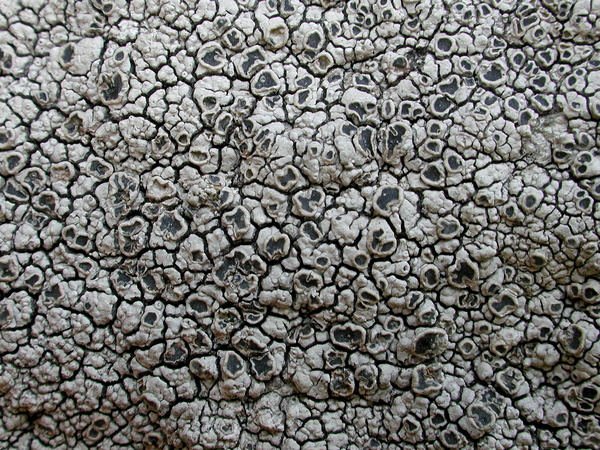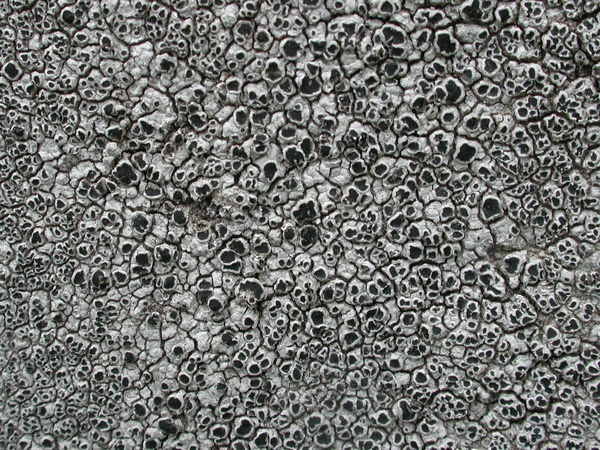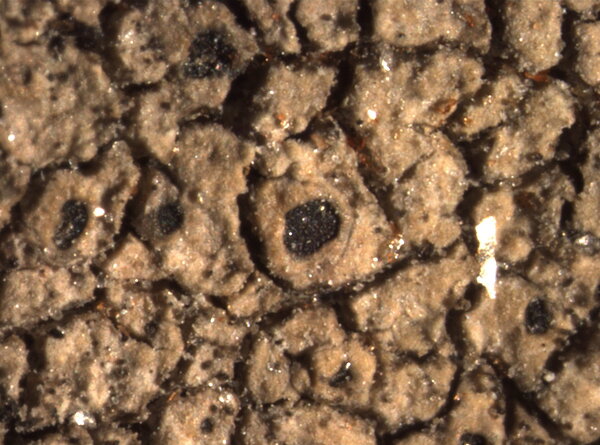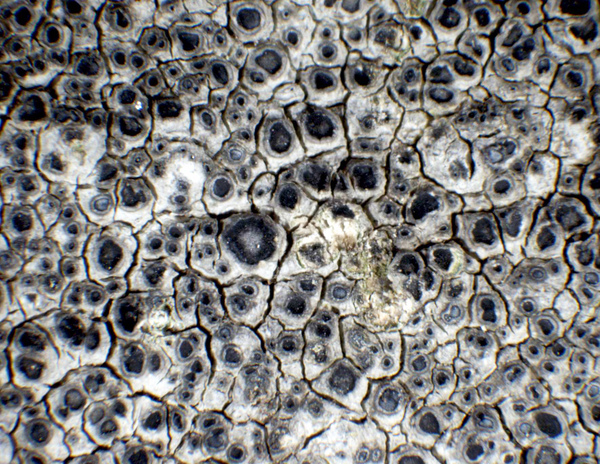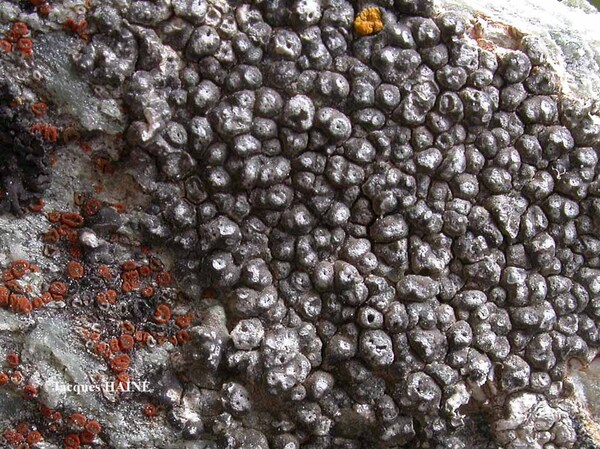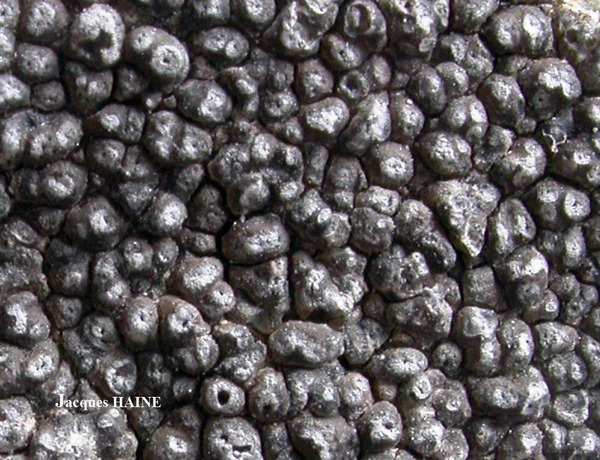Aspicilia cinerea (L.) Körb.
Syst. Lich. Germ.: 164, 1855. Basionym: Lichen cinereus L. - Mantissa Pl.: 132, 1767.
Synonyms: Aspicilia angelorum B. de Lesd.; Aspicilia cinerea var. alba (Schaer.) Anzi; Aspicilia cinerea var. vulgaris Schaer.; Aspicilia cinerea var. vulgaris Schaer. f. lignicola Anzi; Aspicilia depressa (Ach.) Anzi; Aspicilia gibbosa var. lignicola (Anzi) Bagl. & Carestia; Aspicilia polygonia (Vill.) A. Massal.; Lecanora cinerea (L.) Sommerf.; Lecanora excipularis H. Magn. nomen sed non planta; Lecanora illimata (Wahlenb.) Ach.; Lecanora protrudens Malme?; Parmelia cinerea (L.) Hepp; Sagedia depressa Ach.; Urceolaria cinerea (L.) Ach.
Distribution: N - VG (Castello 2002, Martellos & Castello 2004), Frl (Zwanzinger 1869)., Ven (Nascimbene 2005c), TAA (Caniglia & al. 2002, Nascimbene 2001b, 2003, 2005b, Lang 2009, Nascimbene & al. 2022), Lomb (Dalle Vedove & al. 2004, Rico & al. 2007), Piem (Isocrono & al. 2003, 2004, 2006, Isocrono & Piervittori 2008, Giordani & al. 2014, Favero-Longo & al. 2015, Romano & al. 2025), VA (Borlandelli & al. 1996, Piervittori & Isocrono 1997, 1999, Piervittori & al. 1998, 2001, 2004, Matteucci & al. 2013b, \2015c), Emil (Dalle Vedove & al. 2002, Fariselli & al. 2020), Lig (Giordani & al. 2016). C - Tosc (Brackel 2014, 2015), Marc, Laz (Pietrini & al. 2008, Roccardi & al. 2014), Sar (Rizzi & al. 2011, Giordani & al. 2013, Brackel & Berger 2019). S - Camp (Ricciardi & al. 2000, Aprile & al. 2002, Catalano & al. 2016), Pugl, Bas (Nimis & Tretiach 1999), Cal (Puntillo 1996), Si (Grillo 1998, Grillo & Caniglia 2004, Brackel 2008b, 2008c).
Description: Thallus crustose, episubstratic, 0.3-0.6(-1) mm thick, areolate, sometimes rimose at the edge, forming up to 10 cm wide patches. Areoles contiguous, separated by distinct cracks, angular or irregular, flat to slightly convex, 0.3-1.3(-2.5) mm wide, pale grey to ash-grey, sometimes with a brownish tinge, often developing on a dark hypothallus. Cortex paraplectenchymatous, covered with an epinecral layer, with crystals soluble in K but not in N, that of the apothecial margins usually brown (Subdepressa-brown pigment, K-, disappearing in N). Apothecia lecanorine-aspicilioid, (0.1-)0.3-1(-2) mm wide, immersed, 1-2(-5) per areole, often confluent, round to angular or almost linear, with a black, usually concave to flat, smooth, epruinose or faintly pruinose disc, and a level to slightly raised thalline margin, often with a darker annular zone. Epithecium grey-green to olive-brown, N+ emerald green, K+ brown; hymenium colourless, I+ persistently blue, 70-120 µm high; paraphyses simple or sparingly branched and anastomosing, 1.5-2 µm thick at base, moniliform in upper part, the uppermost cells globose, 3-5 µm wide; hypothecium colourless, I+ persistently blue, not subtended by an algal layer. Asci 8-spored, clavate, the thin outer coat K/I+ blue, the wall and apical dome K/I-. Ascospores 1-celled, hyaline, ellipsoid, (10-)12-22(-25) x 6.5-12(-14) µm. Pycnidia immersed, pyriform, with a black, punctiform ostiole. Conidia thread-like, straight, (10-)12-20(-25) x (0.5-)0.8-1(-1.5) µm. Spot tests: cortex and medulla K+ yellow turning red (needle-like crystals), C-, KC-, P+ yellow-orange. Chemistry: norstictic acid, sometimes with traces of connorstictic acid.Note: on acid to basic siliceous rocks wetted by rain, rarely on worked timber. Taken in the broadest sense, as here, this is a holarctic and probably bipolar, extremely variable lichen, widespread from subtropical to arctic areas. Several older records might refer to A. prestensis. Records from lowland areas in the Mediterranean Region are mostly due to confusion with Aspiciliella intermutans.
Growth form: Crustose
Substrata: rocks and lignum
Photobiont: green algae other than Trentepohlia
Reproductive strategy: mainly sexual
Poorly known taxon in need of further study
Commonnes-rarity: (info)
Alpine belt: very common
Subalpine belt: extremely common
Oromediterranean belt: rather common
Montane belt: rather common
Submediterranean belt: rare
Padanian area: extremely rare
Humid submediterranean belt: rare
Humid mediterranean belt: very rare
Dry mediterranean belt: absent

Predictive model
Herbarium samples
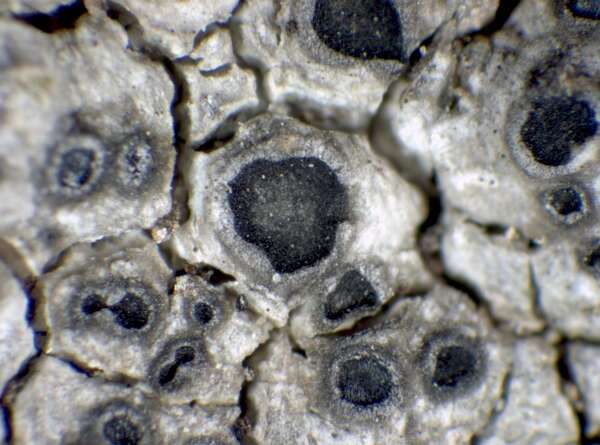

P.L. Nimis; Owner: Department of Life Sciences, University of Trieste
Herbarium: TSB (33551)
2001/12/09
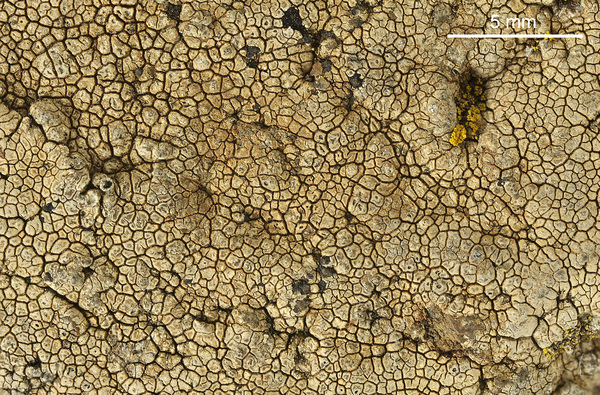

Felix Schumm – CC BY-SA 4.0
[8655], Portugal, Madeira, Porto Novo südlich von Gaula, 32°39.775’ N, 16°48.781’ W, 19 m, trockene, sonnige, küstennahe Lavafelsen. Leg. Schumm 16.04.2001, det. Schumm, 2013, conf. Aptroot
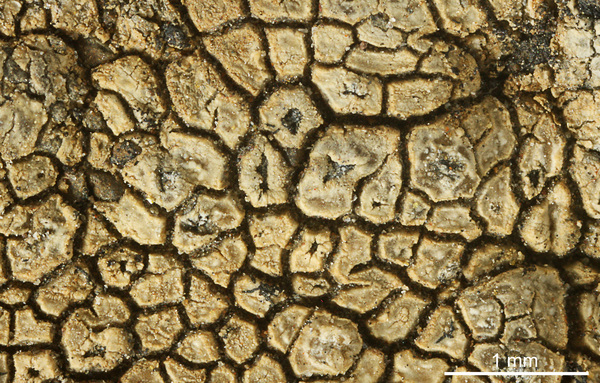

Felix Schumm – CC BY-SA 4.0
[8655], Portugal, Madeira, Porto Novo südlich von Gaula, 32°39.775’ N, 16°48.781’ W, 19 m, trockene, sonnige, küstennahe Lavafelsen. Leg. Schumm 16.04.2001, det. Schumm, 2013, conf. Aptroot
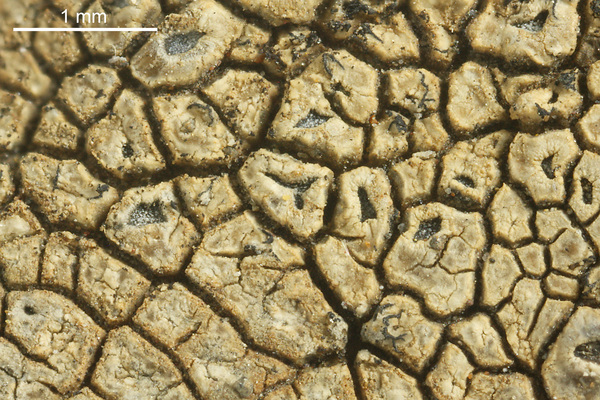

Felix Schumm – CC BY-SA 4.0
[8655], Portugal, Madeira, Porto Novo südlich von Gaula, 32°39.775’ N, 16°48.781’ W, 19 m, trockene, sonnige, küstennahe Lavafelsen. Leg. Schumm 16.04.2001, det. Schumm, 2013, conf. Aptroot
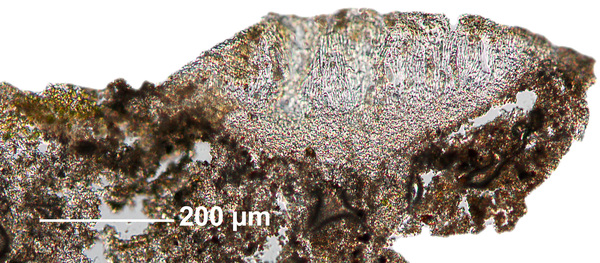

Felix Schumm – CC BY-SA 4.0
[8655], Portugal, Madeira, Porto Novo südlich von Gaula, 32°39.775’ N, 16°48.781’ W, 19 m, trockene, sonnige, küstennahe Lavafelsen. Leg. Schumm 16.04.2001, det. Schumm, 2013, conf. Aptroot
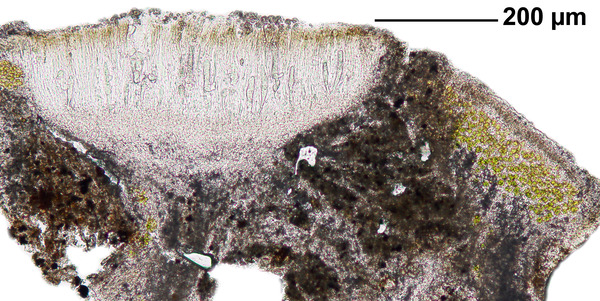

Felix Schumm – CC BY-SA 4.0
[8655], Portugal, Madeira, Porto Novo südlich von Gaula, 32°39.775’ N, 16°48.781’ W, 19 m, trockene, sonnige, küstennahe Lavafelsen. Leg. Schumm 16.04.2001, det. Schumm, 2013, conf. Aptroot
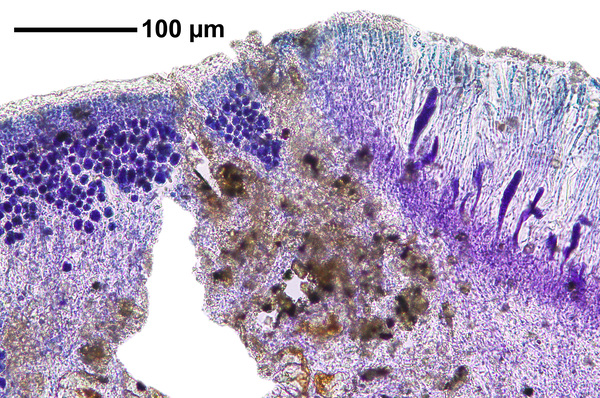

Felix Schumm – CC BY-SA 4.0
[8655], Portugal, Madeira, Porto Novo südlich von Gaula, 32°39.775’ N, 16°48.781’ W, 19 m, trockene, sonnige, küstennahe Lavafelsen. Leg. Schumm 16.04.2001, det. Schumm, 2013, conf. Aptroot
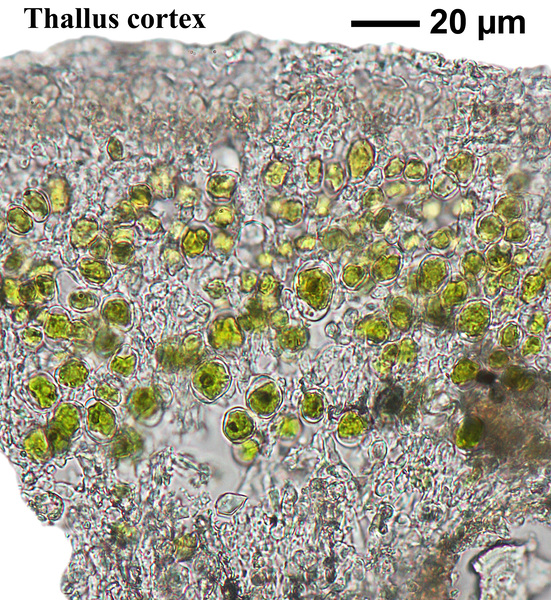

Felix Schumm – CC BY-SA 4.0
[8655], Portugal, Madeira, Porto Novo südlich von Gaula, 32°39.775’ N, 16°48.781’ W, 19 m, trockene, sonnige, küstennahe Lavafelsen. Leg. Schumm 16.04.2001, det. Schumm, 2013, conf. Aptroot
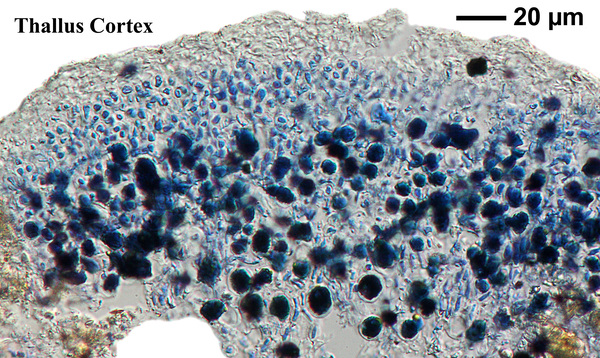

Felix Schumm – CC BY-SA 4.0
[8655], Portugal, Madeira, Porto Novo südlich von Gaula, 32°39.775’ N, 16°48.781’ W, 19 m, trockene, sonnige, küstennahe Lavafelsen. Leg. Schumm 16.04.2001, det. Schumm, 2013, conf. Aptroot
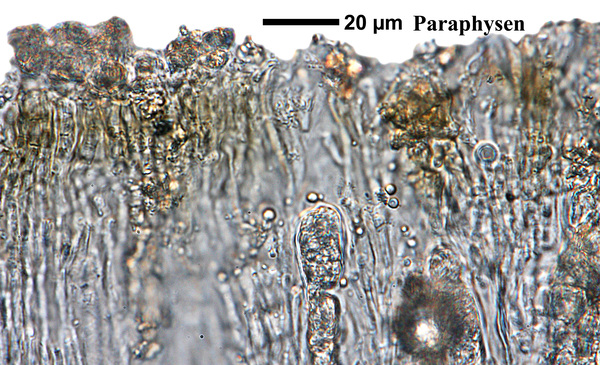

Felix Schumm – CC BY-SA 4.0
[8655], Portugal, Madeira, Porto Novo südlich von Gaula, 32°39.775’ N, 16°48.781’ W, 19 m, trockene, sonnige, küstennahe Lavafelsen. Leg. Schumm 16.04.2001, det. Schumm, 2013, conf. Aptroot
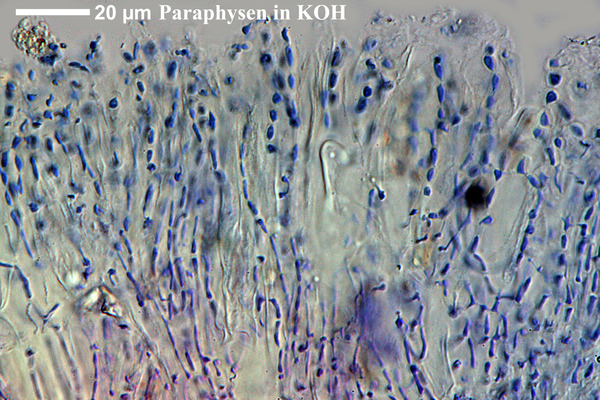

Felix Schumm – CC BY-SA 4.0
[8655], Portugal, Madeira, Porto Novo südlich von Gaula, 32°39.775’ N, 16°48.781’ W, 19 m, trockene, sonnige, küstennahe Lavafelsen. Leg. Schumm 16.04.2001, det. Schumm, 2013, conf. Aptroot
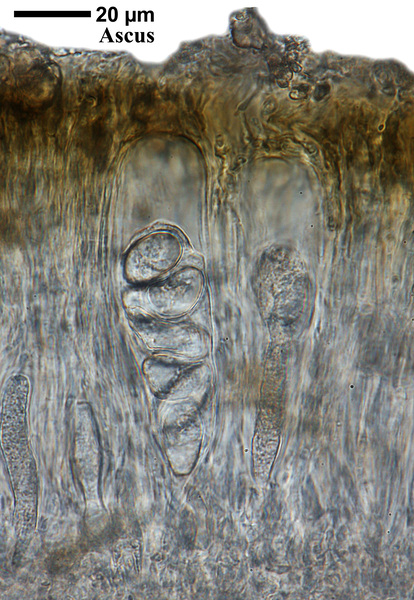

Felix Schumm – CC BY-SA 4.0
[8655], Portugal, Madeira, Porto Novo südlich von Gaula, 32°39.775’ N, 16°48.781’ W, 19 m, trockene, sonnige, küstennahe Lavafelsen. Leg. Schumm 16.04.2001, det. Schumm, 2013, conf. Aptroot
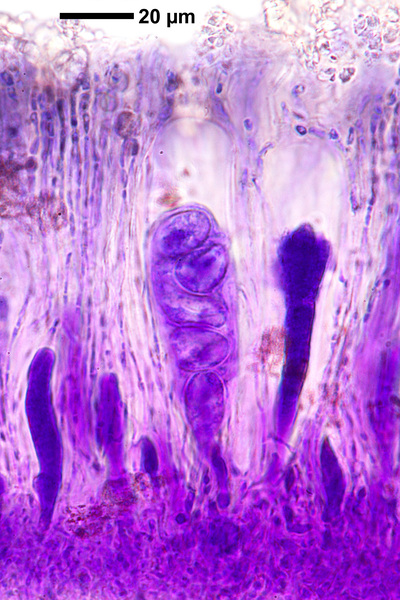

Felix Schumm – CC BY-SA 4.0
[8655], Portugal, Madeira, Porto Novo südlich von Gaula, 32°39.775’ N, 16°48.781’ W, 19 m, trockene, sonnige, küstennahe Lavafelsen. Leg. Schumm 16.04.2001, det. Schumm, 2013, conf. Aptroot
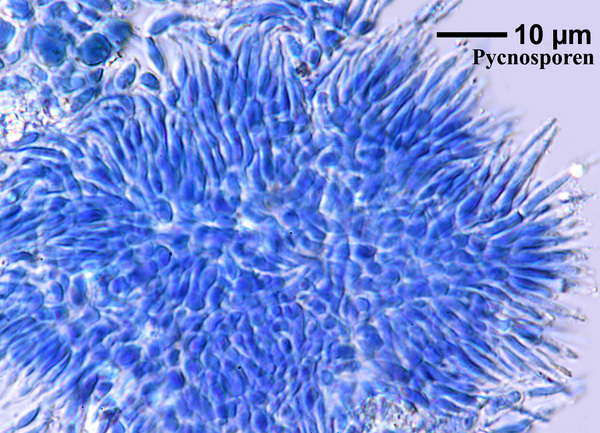

Felix Schumm – CC BY-SA 4.0
[8655], Portugal, Madeira, Porto Novo südlich von Gaula, 32°39.775’ N, 16°48.781’ W, 19 m, trockene, sonnige, küstennahe Lavafelsen. Leg. Schumm 16.04.2001, det. Schumm, 2013, conf. Aptroot
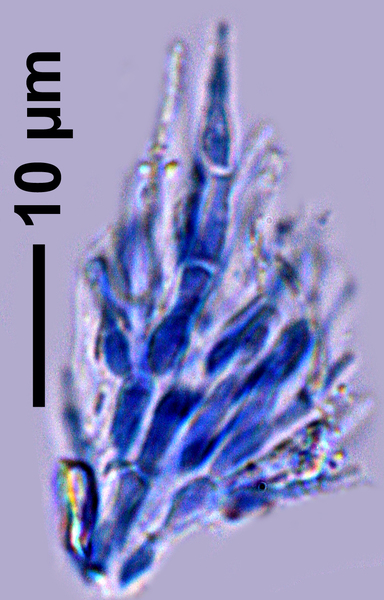

Felix Schumm – CC BY-SA 4.0
[8655], Portugal, Madeira, Porto Novo südlich von Gaula, 32°39.775’ N, 16°48.781’ W, 19 m, trockene, sonnige, küstennahe Lavafelsen. Leg. Schumm 16.04.2001, det. Schumm, 2013, conf. Aptroot
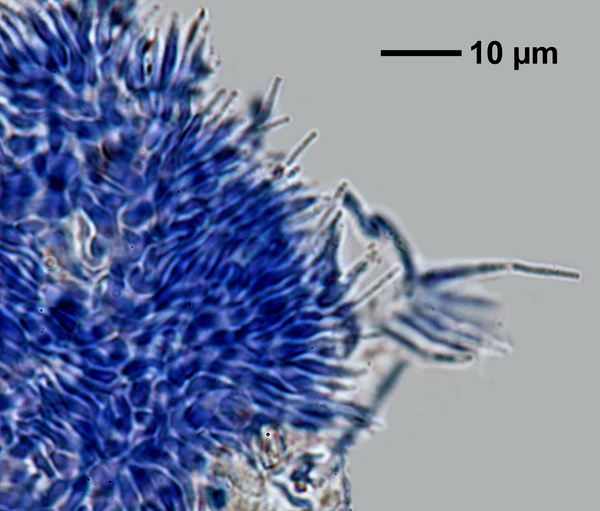

Felix Schumm – CC BY-SA 4.0
[8655], Portugal, Madeira, Porto Novo südlich von Gaula, 32°39.775’ N, 16°48.781’ W, 19 m, trockene, sonnige, küstennahe Lavafelsen. Leg. Schumm 16.04.2001, det. Schumm, 2013, conf. Aptroot
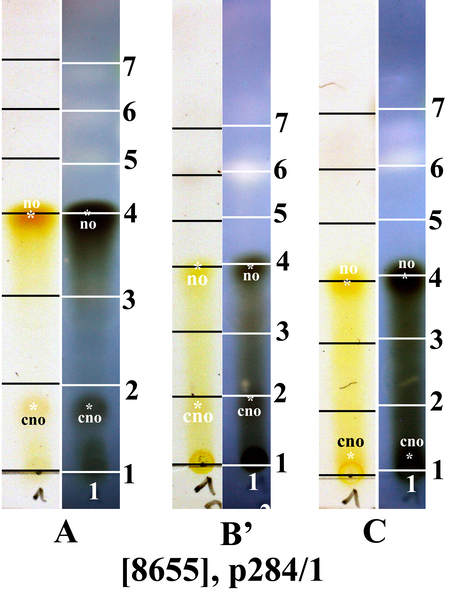

Felix Schumm – CC BY-SA 4.0
[8655], Portugal, Madeira, Porto Novo südlich von Gaula, 32°39.775’ N, 16°48.781’ W, 19 m, trockene, sonnige, küstennahe Lavafelsen. Leg. Schumm 16.04.2001, det. Schumm, 2013, conf. Aptroot
HPTLC in den Laufmitteln A, B’ und C nach Säurebehandlung bei
Tageslicht und 366 nm UV-Langwelle.
1: Start, 4: Position von Norstictinsäure, 7: Position von Atranorin
no: Norstictinsäure
cno: Connrostictinsäure
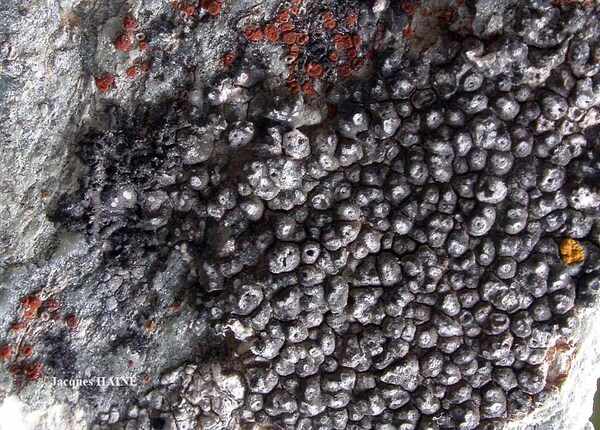
Jacques Haine - Source: http://www.lichensmaritimes.org/index.php?task=fiche&lichen=587&lang=en
France, Quéras
Growth form: Crustose
Substrata: rocks and lignum
Photobiont: green algae other than Trentepohlia
Reproductive strategy: mainly sexual
Poorly known taxon in need of further study
Commonnes-rarity: (info)
Alpine belt: very common
Subalpine belt: extremely common
Oromediterranean belt: rather common
Montane belt: rather common
Submediterranean belt: rare
Padanian area: extremely rare
Humid submediterranean belt: rare
Humid mediterranean belt: very rare
Dry mediterranean belt: absent

Predictive model
| Herbarium samples |


P.L. Nimis; Owner: Department of Life Sciences, University of Trieste
Herbarium: TSB (33551)
2001/12/09


Felix Schumm – CC BY-SA 4.0
[8655], Portugal, Madeira, Porto Novo südlich von Gaula, 32°39.775’ N, 16°48.781’ W, 19 m, trockene, sonnige, küstennahe Lavafelsen. Leg. Schumm 16.04.2001, det. Schumm, 2013, conf. Aptroot


Felix Schumm – CC BY-SA 4.0
[8655], Portugal, Madeira, Porto Novo südlich von Gaula, 32°39.775’ N, 16°48.781’ W, 19 m, trockene, sonnige, küstennahe Lavafelsen. Leg. Schumm 16.04.2001, det. Schumm, 2013, conf. Aptroot


Felix Schumm – CC BY-SA 4.0
[8655], Portugal, Madeira, Porto Novo südlich von Gaula, 32°39.775’ N, 16°48.781’ W, 19 m, trockene, sonnige, küstennahe Lavafelsen. Leg. Schumm 16.04.2001, det. Schumm, 2013, conf. Aptroot


Felix Schumm – CC BY-SA 4.0
[8655], Portugal, Madeira, Porto Novo südlich von Gaula, 32°39.775’ N, 16°48.781’ W, 19 m, trockene, sonnige, küstennahe Lavafelsen. Leg. Schumm 16.04.2001, det. Schumm, 2013, conf. Aptroot


Felix Schumm – CC BY-SA 4.0
[8655], Portugal, Madeira, Porto Novo südlich von Gaula, 32°39.775’ N, 16°48.781’ W, 19 m, trockene, sonnige, küstennahe Lavafelsen. Leg. Schumm 16.04.2001, det. Schumm, 2013, conf. Aptroot


Felix Schumm – CC BY-SA 4.0
[8655], Portugal, Madeira, Porto Novo südlich von Gaula, 32°39.775’ N, 16°48.781’ W, 19 m, trockene, sonnige, küstennahe Lavafelsen. Leg. Schumm 16.04.2001, det. Schumm, 2013, conf. Aptroot


Felix Schumm – CC BY-SA 4.0
[8655], Portugal, Madeira, Porto Novo südlich von Gaula, 32°39.775’ N, 16°48.781’ W, 19 m, trockene, sonnige, küstennahe Lavafelsen. Leg. Schumm 16.04.2001, det. Schumm, 2013, conf. Aptroot


Felix Schumm – CC BY-SA 4.0
[8655], Portugal, Madeira, Porto Novo südlich von Gaula, 32°39.775’ N, 16°48.781’ W, 19 m, trockene, sonnige, küstennahe Lavafelsen. Leg. Schumm 16.04.2001, det. Schumm, 2013, conf. Aptroot


Felix Schumm – CC BY-SA 4.0
[8655], Portugal, Madeira, Porto Novo südlich von Gaula, 32°39.775’ N, 16°48.781’ W, 19 m, trockene, sonnige, küstennahe Lavafelsen. Leg. Schumm 16.04.2001, det. Schumm, 2013, conf. Aptroot


Felix Schumm – CC BY-SA 4.0
[8655], Portugal, Madeira, Porto Novo südlich von Gaula, 32°39.775’ N, 16°48.781’ W, 19 m, trockene, sonnige, küstennahe Lavafelsen. Leg. Schumm 16.04.2001, det. Schumm, 2013, conf. Aptroot


Felix Schumm – CC BY-SA 4.0
[8655], Portugal, Madeira, Porto Novo südlich von Gaula, 32°39.775’ N, 16°48.781’ W, 19 m, trockene, sonnige, küstennahe Lavafelsen. Leg. Schumm 16.04.2001, det. Schumm, 2013, conf. Aptroot


Felix Schumm – CC BY-SA 4.0
[8655], Portugal, Madeira, Porto Novo südlich von Gaula, 32°39.775’ N, 16°48.781’ W, 19 m, trockene, sonnige, küstennahe Lavafelsen. Leg. Schumm 16.04.2001, det. Schumm, 2013, conf. Aptroot


Felix Schumm – CC BY-SA 4.0
[8655], Portugal, Madeira, Porto Novo südlich von Gaula, 32°39.775’ N, 16°48.781’ W, 19 m, trockene, sonnige, küstennahe Lavafelsen. Leg. Schumm 16.04.2001, det. Schumm, 2013, conf. Aptroot


Felix Schumm – CC BY-SA 4.0
[8655], Portugal, Madeira, Porto Novo südlich von Gaula, 32°39.775’ N, 16°48.781’ W, 19 m, trockene, sonnige, küstennahe Lavafelsen. Leg. Schumm 16.04.2001, det. Schumm, 2013, conf. Aptroot


Felix Schumm – CC BY-SA 4.0
[8655], Portugal, Madeira, Porto Novo südlich von Gaula, 32°39.775’ N, 16°48.781’ W, 19 m, trockene, sonnige, küstennahe Lavafelsen. Leg. Schumm 16.04.2001, det. Schumm, 2013, conf. Aptroot


Felix Schumm – CC BY-SA 4.0
[8655], Portugal, Madeira, Porto Novo südlich von Gaula, 32°39.775’ N, 16°48.781’ W, 19 m, trockene, sonnige, küstennahe Lavafelsen. Leg. Schumm 16.04.2001, det. Schumm, 2013, conf. Aptroot
HPTLC in den Laufmitteln A, B’ und C nach Säurebehandlung bei
Tageslicht und 366 nm UV-Langwelle.
1: Start, 4: Position von Norstictinsäure, 7: Position von Atranorin
no: Norstictinsäure
cno: Connrostictinsäure

 INDEX FUNGORUM
INDEX FUNGORUM
 GBIF
GBIF
 DOLICHENS
DOLICHENS
